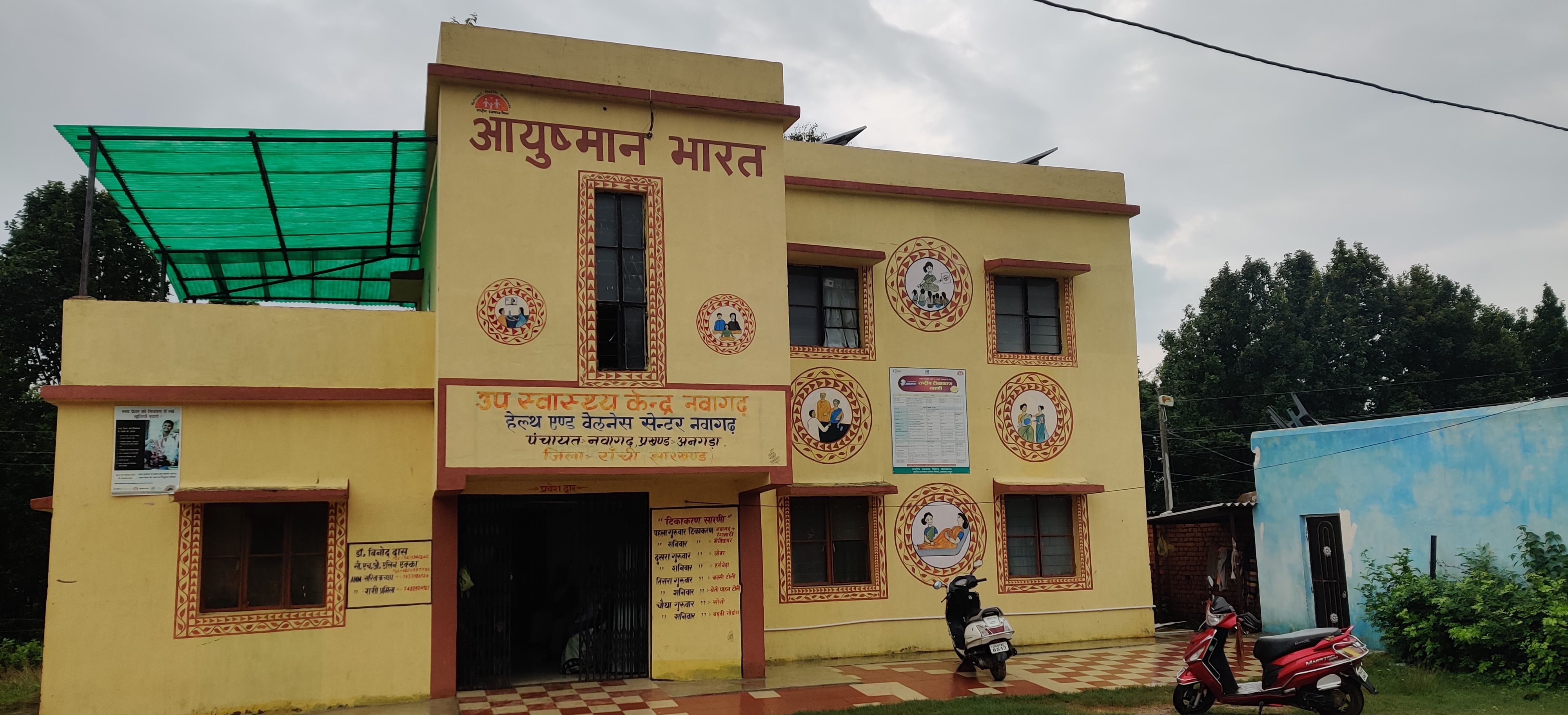Sustainable and reliable electricity can enhance the services provided by primary healthcare and build public’s trust in these facilities

Nawagarh Gram Panchayat in Angara Block, Ranchi district is home to a self-sustained health and wellness centre that serves the community supported by clean energy.
With seven rooms, this facility is well maintained, clean, and equipped with necessary equipment such as fans, lights, a TV in the waiting room, geyser, and a water pump. It is relatively new and established under the Ministry of Health and Family Welfare’s Ayushman Bharat Programme.
A beacon of hope
This health facility is visited for treatment of common illnesses, emergencies, as well as child-birth. The operation theatre for deliveries is well equipped with a baby warmer, Doppler foetal heartbeat monitor, sterilizer, etc. On an average, eight deliveries take place here every month. This well-equipped centre is said to have a positive impact on the number of institutional deliveries in the area too.
Only 9 out of Jharkhand’s 24 districts have maternal deaths lower than the SDG target. Institutional deliveries, also known as facility-based births are often promoted for reducing maternal and neo-natal mortality. It is the percentage of deliveries that occur in public and private institutional facilities such as hospitals or in the presence of trained healthcare professionals. A cross-sectional study in a district of Jharkhand discovered that “proper waiting areas, beds, housekeeping services, electricity, water and clean toilets are basic structural requirements which affect women’s satisfaction with services.” There is a similar dependence on electricity for vaccine storage that eventually has an impact on immunisation coverage rates. Therefore, prioritising maternal and child health outcomes is a critical entry point for assisting stakeholders in appreciating the need for reliable electricity in supporting improving public health service delivery.
Dark days of diesel dependence
But this was not always the case. Before 2018, the center’s services were limited to vaccination and first aid. It had no stable electricity supply. Electricity cuts sometimes lasted up to 3 days.
During this period, a diesel generator was its source of energy but it was not without challenges. Its bulky design made it difficult for women staff to switch it on manually. The nearest fuel station that could provide the diesel to operate the generator—is an hour and half away from the centre.
But since last year, the use of a reliable solar photovoltaic (PV) system has brought positive change. The centre now has running water supply. It can also use this alternate electricity source to manage electricity cuts especially during the monsoon.
The solar solution
The health and wellness centre is fitted with a roof top solar system with a backup and capacity of 3.7 kW. It is proving to be a relief in running the critical healthcare services for the surrounding villages. The staff is well equipped to serve the community and proud to be able to provide a range of services to the locals. They report to be familiar faces among villagers who now seek public health services regularly here. They have also noticed a positive change in the local perception about the center.
Stakeholders working in the provisioning of public health service delivery, acknowledge the need for reliable electricity in providing improved services. The Indian Public Health Standards, a set of uniform standards recommended by the National Health Mission also underscore the need for availability of electricity across various levels of public health service delivery. In some instances, the standards recommend the use of diesel generators—"Generator back-up should be available in all facilities. Generator should be of good capacity.” Owing to resource constraints, healthcare stakeholders are compelled to identify solutions to address barriers to service delivery in an incremental fashion. These incremental interventions need to be supported by a coordinated and integrated approach to strengthening the electricity infrastructure for the health facilities through increased coordination at the planning and budgeting level between the Departments of Health, Energy and the electricity utility.

